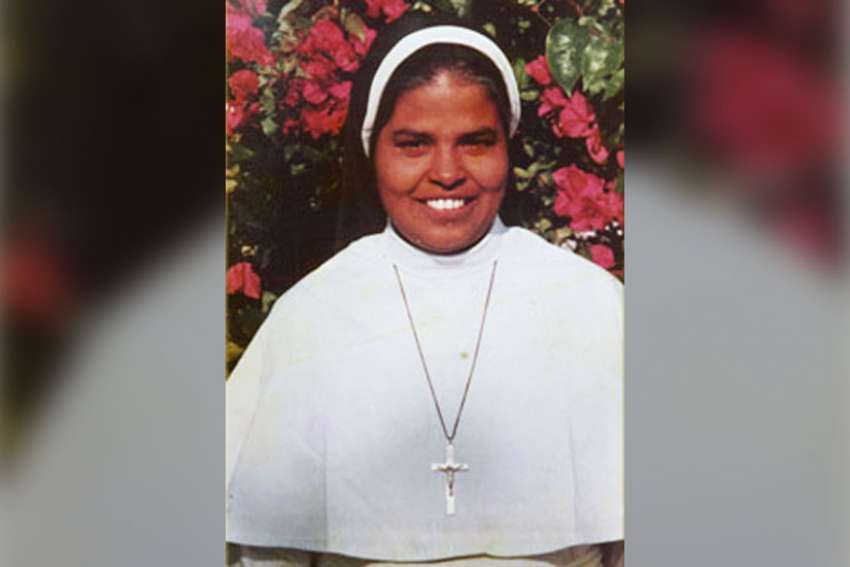The Franciscan Clarist nun, widely known as Sister Rani, was stabbed to death aboard a bus Feb. 25, 1995. Authorities said a hired assassin stabbed her at least 50 times. Her work among poor landless people had upset some landlords who did not like her helping locals become more self-reliant.
The nun, then 41 years old, worked in Udainagar, a village in the Indore Diocese. She was traveling to Indore and then to her home in Kerala, in southern India when the attack occurred.
Sister Rani Maria Vattalil was buried outside Sacred Heart Church in Udainagar. Her grave was exhumed Nov. 18 as part of the canonization process, and her remains have been moved to a newly built tomb inside the church, ucanews.com reported, quoting Bishop Chacko Thottumarikal of Indore.
Prior to canonization, the church requires that the grave of a candidate for sainthood be verified to ensure that the person buried in the locale is properly identified. Traditionally, Catholics also open the grave to see if the body is uncorrupted, generally seen as a sign that the individual is worthy of canonization.
Hundreds of people have been flocking to Sister Rani's new tomb seeking her intercession. Several people, including non-Christians, have accepted her as a saintly person who led a heroic life, the bishop said.
There is a demand to canonize Sister Rani as a martyr, Bishop Thottumarikal said, adding "it is a decision of the Vatican."
Sister Rani, who started working in a mission in northern India in 1975, arrived in Udainagar in 1992 where she confronted local moneylenders who were exploiting local residents. Authorities said landlords and moneylenders hired Samandhar Singh to murder the nun. He was convicted of the crime and served a 12-year prison sentence.
Singh told Catholic News Service in 2014 that he experienced a "rebirth" during a 2002 visit by Sister Rani's younger sibling, Sister Selmy, also a member of the Franciscan Clarist Congregation. During the visit Sister Selmy tied a "rahki" – a thread that represents siblinghood – on Singh, accepting him into her family.
Bishop George Anathil, who was then serving in Indore and died in 2009, initiated the sainthood cause for Sister Rani in 2001 by establishing two commissions – one theological and the other historical – to examine her life. The commissions submitted their findings to the three-member diocesan inquiry tribunal that was established in 2005 to carry forward the process.
The theological commission verified from Sister Rani's published writings that she had not contravened any church teaching. The historical commission delved into unpublished write-ups and other events related to the late nun, and also ascertained that she had steadfastly upheld church teachings.
Sister Rani was named a servant of God by the church in 2005.
Once a sainthood cause has begin, the candidate is declared a servant of God and a postulator is named. The next step is a diocesan inquiry on the life of the person. The Congregation for Saints' Causes then reviews the gathered information, and if he or she is found to have led a heroic life of Christian virtues, the church bestows the title "Venerable."
The next steps would be beatification and canonization. In general two miracles are needed for sainthood – one for beatification and the second for canonization.


